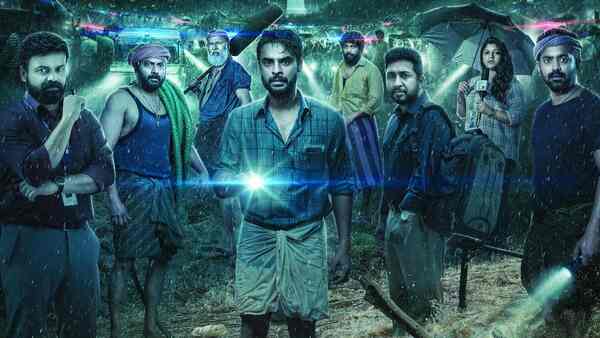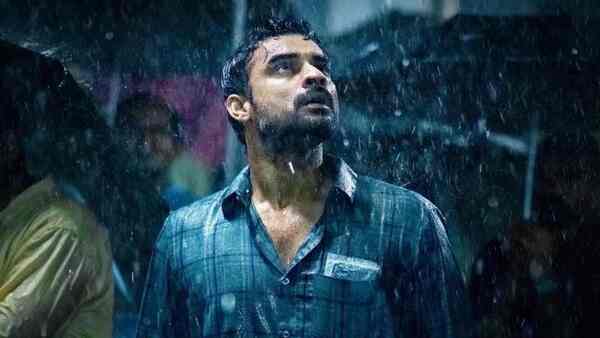Newsletter | 2018 Is Jude Anthany Joseph's Ode To Kerala's Resilience
The Tovino Thomas-starrer traces the many instances of hope and humanity that emerged amid the devastation and despair of the 2018 floods in Kerala. Neelima Menon writes.

Last Updated: 04.29 PM, May 11, 2023
This column was originally published as part of our newsletter The Daily Show on May 11, 2023. Subscribe here. (We're awesome about not spamming your inbox!)
***
NO ONE HAS paraphrased the compelling power of Jude Anthany's latest film, 2018, which documents the year unprecedented floods devastated the state of Kerala, better than the director himself. As a note of gratitude to audiences who’ve loved the film, he wrote on Facebook: “Thank you for giving me an opportunity to direct a film superbly scripted by the people of Kerala.”
That hints at why this star-studded spectacle — with a blend of adrenaline highs, studied tear-jerker moments, angst, and sound VFX — is turning out to be the biggest hit of this year in Kerala. It almost feels like Jude simply propelled us on a time machine to revisit a five-year-old calamity that robbed people of their lives and livelihood. The narrative literally sets off an avalanche of memories for the audience..
The plot takes its own time to unravel, acquainting us with the multitude of characters and their conflicts. That part is, at best, generic. The small town somehow looks staged, including the tea kadai and other paraphernalia. There are several intertwined arcs, and despite the predictability of how each character will pan out, the inherent relatability of their narratives (which seem to be drawn from human interest stories reported during the floods) keeps us invested.
There is Anoop (Tovino Thomas), an ex-Army man who is desperate to migrate to the Gulf and is often mocked by some of the youngsters in his locality. When he confides in his fiancée that he lied about his health to quit the Army as he was scared, we sense exactly how his arc will come to fruition. When fisherman Mathachan (Lal) and his family try to fix an alliance for his youngest son (Asif Ali), they get humiliated by the girl’s father, but we know it is only a precursor before an act of redemption. When a sullen Tamilian (Kalaiyarasan) who nurses a grudge against Malayalis gives a ride to one (Vineeth Sreenivasan) who is having marital issues of his own, we know that the latter is a harbinger of inter-state harmony. Some cinematic moments are almost premeditated: the couple with their special child, or the blind grocer are plot points conveniently placed to turn on the waterworks. Every act of egoism or generosity is predictably developed.

Curiously, left to themselves, there isn’t a single character that rises above the banal. But the crisis lends an emotional heft to these characters. The tagline — “everyone is a hero” — is also very smartly woven into the plot, especially Anoop’s martyr act, and is designed to evoke our compassion. Some insights into the ignorance of the public about such natural disasters, through casual voices, are also spot on.
There are several scenes that add nothing to the plot. The segment involving a tourist taxi driver (Aju Varghese) and two foreign tourists is the weakest bit of the film. Not only were the foreign tourists the worst casting of the decade, but the scenes were equally redundant. The same goes for the Tamilian lorry driver narrative that required better writing or could have been avoided altogether. Aparna Balamurali as the earnest broadcast journalist is lazily narrated, and so were the conversations in the media room.
Jude truly comes into his own post-interval, when the floods take centre stage. A village stands as a microcosm of the state and how its people dealt with the floods. The special effects are so immersive that you are also swept away by the catastrophic events unfolding in front of you. As people soaked to their bones scramble and swim through the floodwaters to survive, you feel emotionally and physically bruised.
Despite the simplistic staging of the scenes, it is the emotional stakes that bring in the goosebumps. So, when an aging fisherman approaches his church to form a flood rescue team, Jude gives him the build-up of a mass hero. When they load their boats onto lorries with the background music rising to a crescendo, one almost gets a vicarious thrill and relief. The predictability can be irksome at times though. Like the scene where Mathachan’s son joins the rescue team after a spat with the family, and his overenthusiasm goes off the pitch. Or the portions where the foreigners are being entertained by the locals… those can truly make you wince. And Jude seems to be too focussed on the niceness of people. He plays it safe and brushes aside the not-so-good experiences of such a calamity. The odd selfish ones are all shown to come out humbled from the experience.
Among the cast, Tovino — who coincidentally was also a real-life hero during the floods — seamlessly makes the transition on screen. But having said that, the character is too opportunely written. For someone who quit the Army out of fear, his sudden transformation as a hero is easy to buy because of the actor playing the part rather than what’s on paper. Despite Tovino doling out some of his stock expressions, he brings a natural empathy into his body language and expressions that enhance the act. Lal is an ingenious choice as the fisherman — traits that are otherwise grating in the actor (garbled speech, melodramatic wailing) work to his advantage in the film. Kunchacko Boban holds your attention in a single scene — he breaks down when he witnesses the destruction of his house on TV and his sorrow is almost tangible. Another excellent sequence involves the rescue of the special child and the family; you can only watch it with your heart in your mouth.
If Aashiq Abu’s Virus was a clinical and realistic cinematic recreation of the Nipah outbreak, 2018 is an impassioned mining of a disaster that shook up an entire state and helped people reaffirm their faith in humanity.

 Premium
Premium